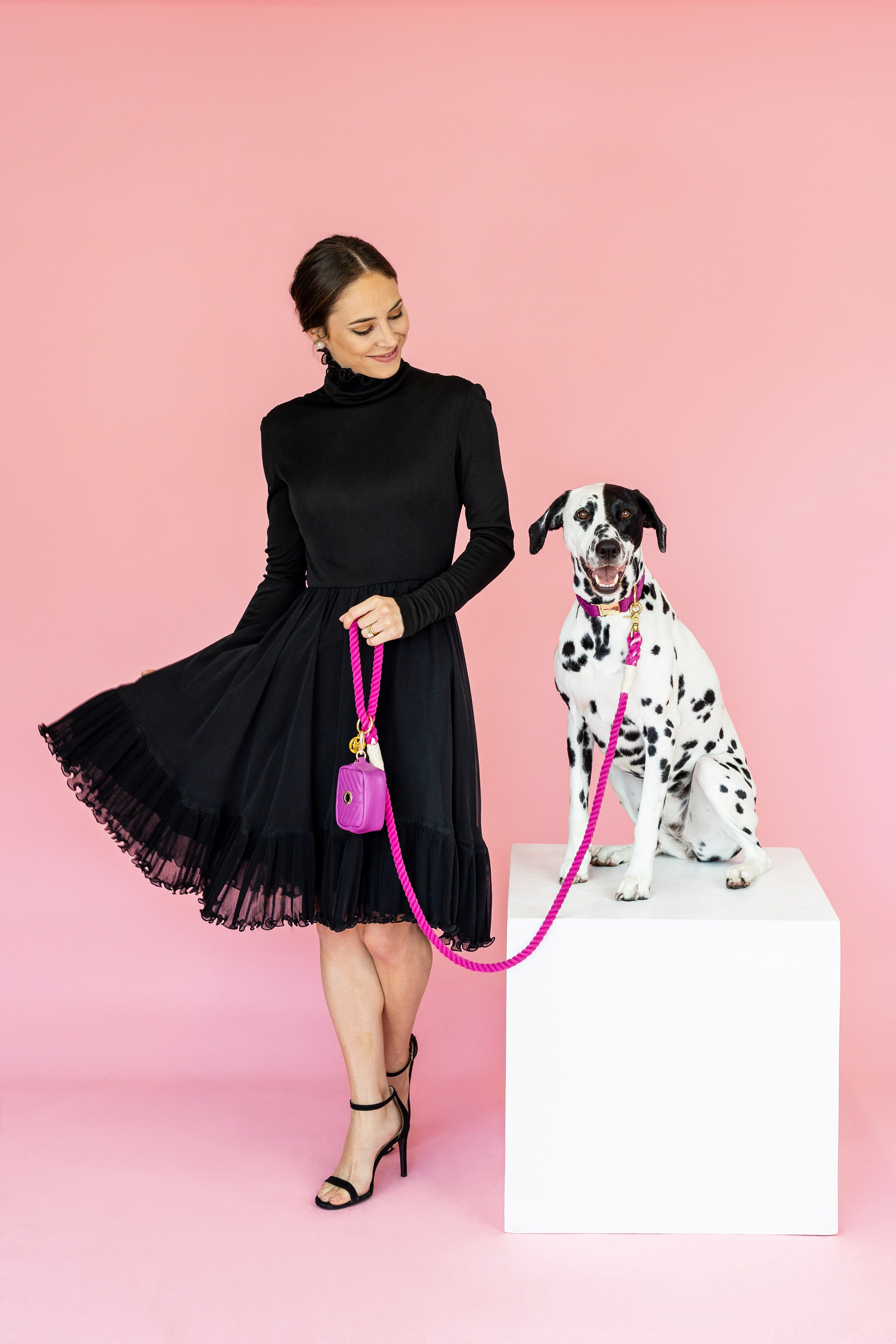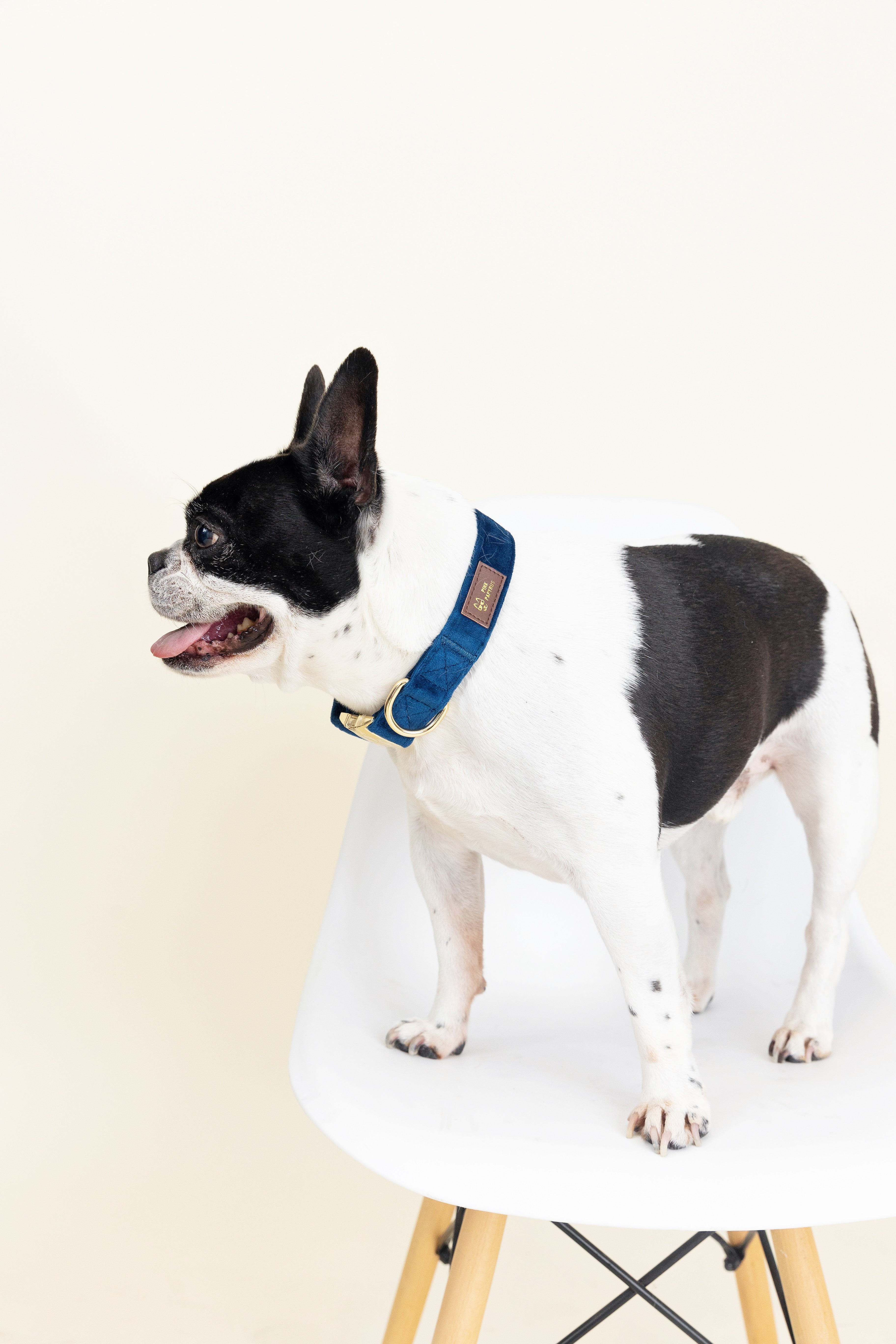How To Leash Train A Puppy
Leash training a puppy is one of the most important skills you’ll teach your new furry family member. It sets the foundation for safe walks, good manners, and confident adventures. The good news? With consistency, positive reinforcement, and the right tools, your puppy can learn to walk calmly beside you—even if they start out as a tiny tornado on four paws.
Who This Is For
This guide is for:
-
New puppy parents wanting stress-free walks
-
Dogs who pull, zigzag, or freeze on the leash
-
Anyone building healthy walk habits from day one

Step 1: Start Indoors First
Before you hit the outdoors, let your puppy get used to wearing a collar and harness inside the house.
-
Keep sessions short and positive.
-
Let them drag the leash around under supervision.
-
Reward calm behavior with treats or praise.
👉 Use a Pink Papyrus adjustable collar or comfortable harness so your puppy feels secure—not restricted.
Step 2: Introduce the Leash Calmly
Clip the leash to your puppy’s harness and allow them to explore while you hold it lightly.
-
Avoid pulling or creating tension.
-
Walk around the room at a slow pace.
-
Reward them every time they follow you or check in with eye contact.
👉 Keep treats in your treat pouch so you can reward instantly.
Step 3: Teach a Cue Like “Let’s Go”
Puppies thrive on clear communication.
-
Say “Let’s go!” in a cheerful tone.
-
Take a few steps forward.
-
Praise and reward the moment they move with you.
Repeat small bursts until they understand that following you = reward.
Step 4: Practice in a Quiet Outdoor Space
Choose a calm environment before taking your puppy into the busy world.
-
Use a short training session (3–5 minutes).
-
Avoid high-distraction areas like busy streets early on.
-
Keep your tone upbeat and calm.
👉 A Pink Papyrus rope leash is perfect for this stage—lightweight, durable, and easy to hold.
Step 5: Reward Good Walking Behavior
Positive reinforcement is essential.
Reward your puppy for:
-
Walking beside you
-
Checking in with eye contact
-
Not pulling
-
Responding to cues
Treats, happy praise, and gentle encouragement go a long way.
Step 6: Redirect Pulling — Don’t Tug Back
If your puppy pulls:
-
Stop walking immediately.
-
Wait for them to come back to you or loosen the leash.
-
Reward when the leash slackens.
This teaches, “Pulling gets me nowhere, but staying close gets me rewards.”
👉 A hands-free leash from Pink Papyrus keeps your body calm and your movements steady—great for puppies learning not to pull.
Step 7: Keep Sessions Short & Fun
Puppy attention spans are short (and sometimes hilarious).
-
Start with 5–10 minutes at a time.
-
End on a positive note.
-
Slowly increase your distance each week.
Celebrate the wins—no matter how tiny!
Step 8: Stay Consistent
Successful leash training relies on the same cues, same rewards, and predictable routines.
-
Walk the same route for the first week.
-
Use the same commands.
-
Keep your energy calm and confident—your puppy mirrors you.
FAQs
Q: Should I use a collar or harness for leash training?
A: Always use a harness for leash training. It protects your puppy’s neck and gives you better control. Keep the collar for ID tags.
Q: How long does leash training take?
A: Most puppies improve within 2–4 weeks with daily, short training sessions.
Q: What if my puppy refuses to walk?
A: Try using treats, toys, or walking in a quieter area. Some puppies get overwhelmed at first—slow and steady wins.
Written by Christine Abdelmalek
Founder and SHE-E-O of Pink Papyrus
Obsessed with crafting dog accessories—beautiful, brilliantly functional, and made with love.



